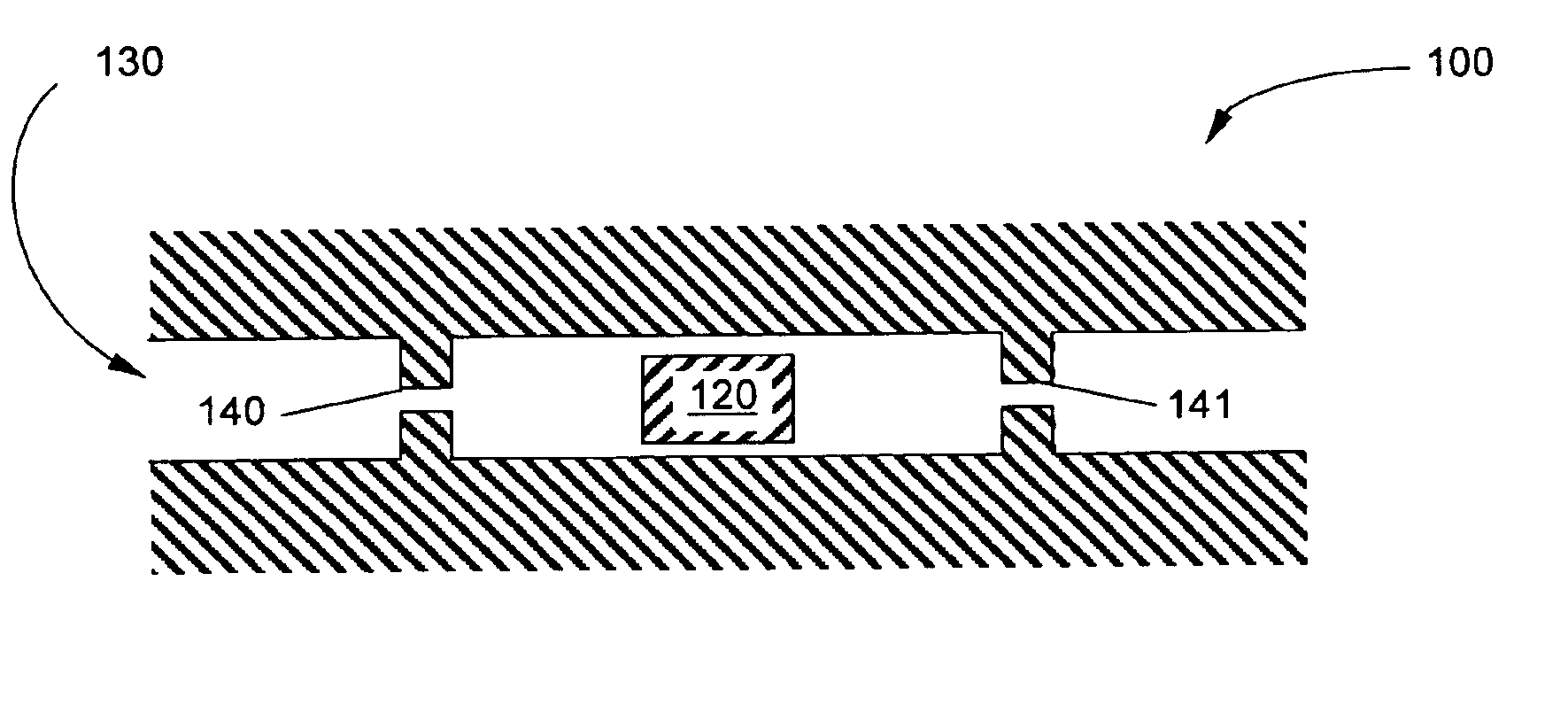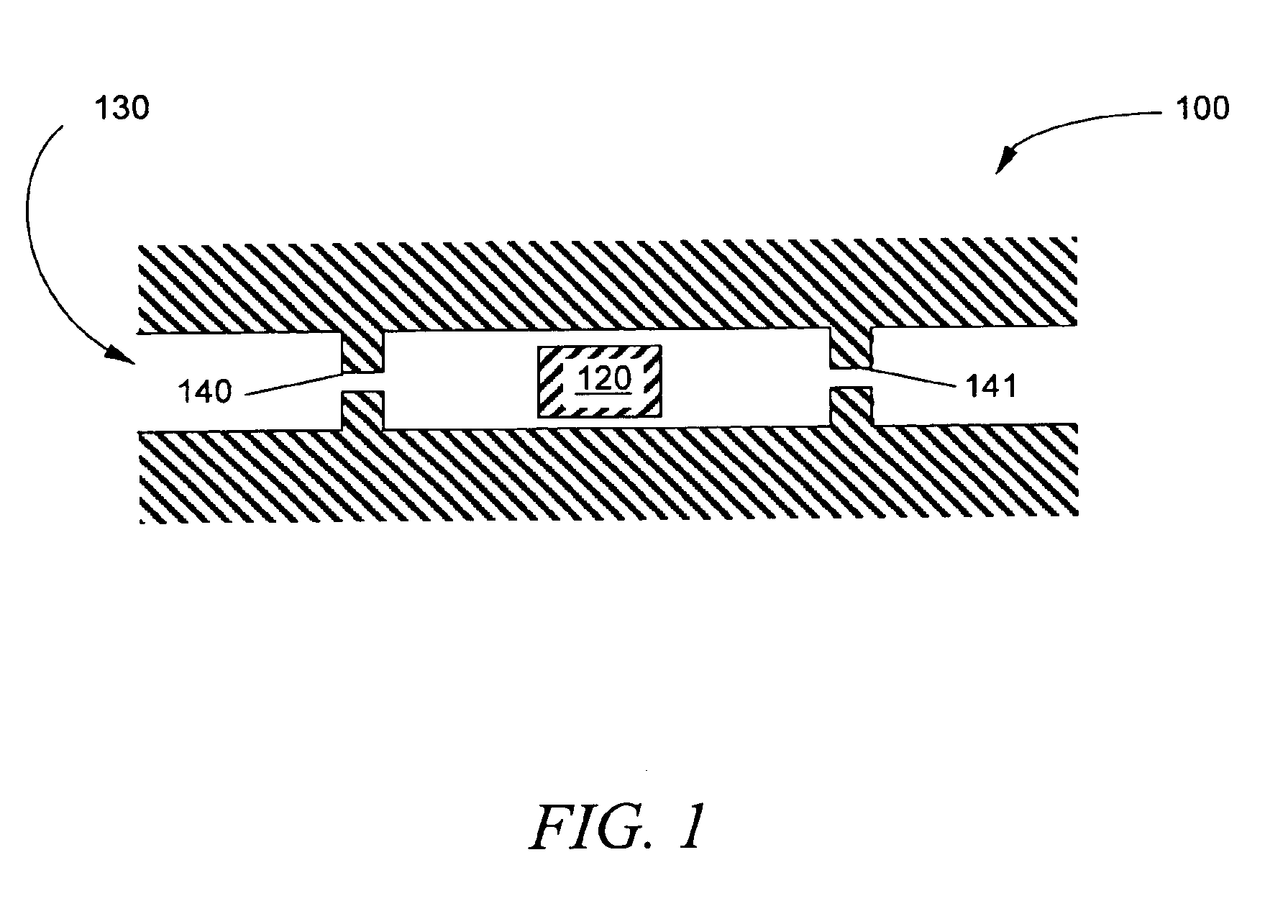Fluorinated silica microchannel surfaces
a microchannel and fluorinated silica technology, applied in the field of silicon-based microchannels, can solve the problems of insufficient prior art reduction or elimination of deformation of mobile polymer monoliths, difficult fabrication, etc., and achieve the effect of reducing the resistance to material movement, reducing the free energy of the surface, and precise and rapid protocol
- Summary
- Abstract
- Description
- Claims
- Application Information
AI Technical Summary
Benefits of technology
Problems solved by technology
Method used
Image
Examples
example 1
A microchannel was filled with a solution of 1,4-dioxane, acetic acid, water and (tridecafluoro-1,1,2,2-tetrahydrooctyl) triethoxysilane. The solution was heated to 70° C. and remained in contact with the microchannel walls for about 2 hrs. The ethoxy groups undergo hydrolysis and react with the silanol (SiOH) groups on the silica microchannel wall to attach the fluorinated alkane to the microchannel wall. The fluorinated alkane projects from the silica wall and lowers the surface energy, and thus the frictional resistance of the channel wall. That coating the internal surface of a microchannel with a low friction coefficient fluorocarbon coating is effective in reducing wall friction is illustrated in the Example below.
example 2
A pair of devices similar in design to that shown in FIG. 1 was prepared. These devices 100 comprised a mobile monolithic polymer element 120 disposed within a microchannel 130, provided with first and second inlets and retaining means 140 and 141. The microchannel in one of devices 100 was coated with a fluorocarbon coating by the method described in example 1 above. Monolithic polymer elements were fabricated within each of the microchannels by methods such as those described in U.S. patent application Ser. Nos. 09 / 695,816 and 10 / 141,906 and conform to the shape of the microchannel.
Hydraulic pressure, applied by pressure means such as an HPLC pump or an electrokinetic pump (such as described in U.S. Pat. Nos. 6,013,164 and 6,019,882 to Paul and Rakestraw), to either end of element 120 caused polymer elements to move one direction or the other in response to the applied pressure. It was found in every case that the pressure required to actuate the polymer element within the fluoroc...
PUM
 Login to View More
Login to View More Abstract
Description
Claims
Application Information
 Login to View More
Login to View More - R&D
- Intellectual Property
- Life Sciences
- Materials
- Tech Scout
- Unparalleled Data Quality
- Higher Quality Content
- 60% Fewer Hallucinations
Browse by: Latest US Patents, China's latest patents, Technical Efficacy Thesaurus, Application Domain, Technology Topic, Popular Technical Reports.
© 2025 PatSnap. All rights reserved.Legal|Privacy policy|Modern Slavery Act Transparency Statement|Sitemap|About US| Contact US: help@patsnap.com


